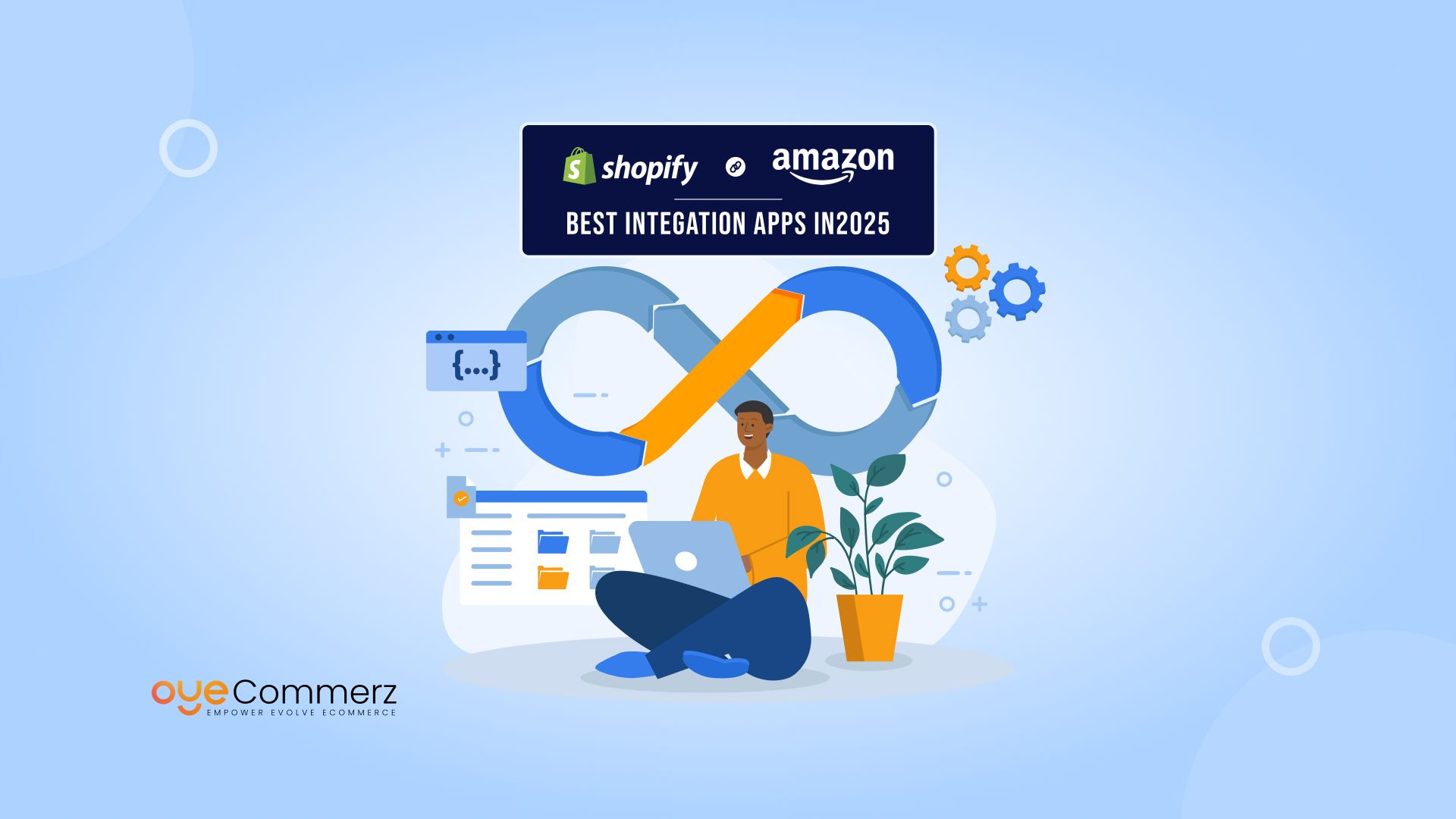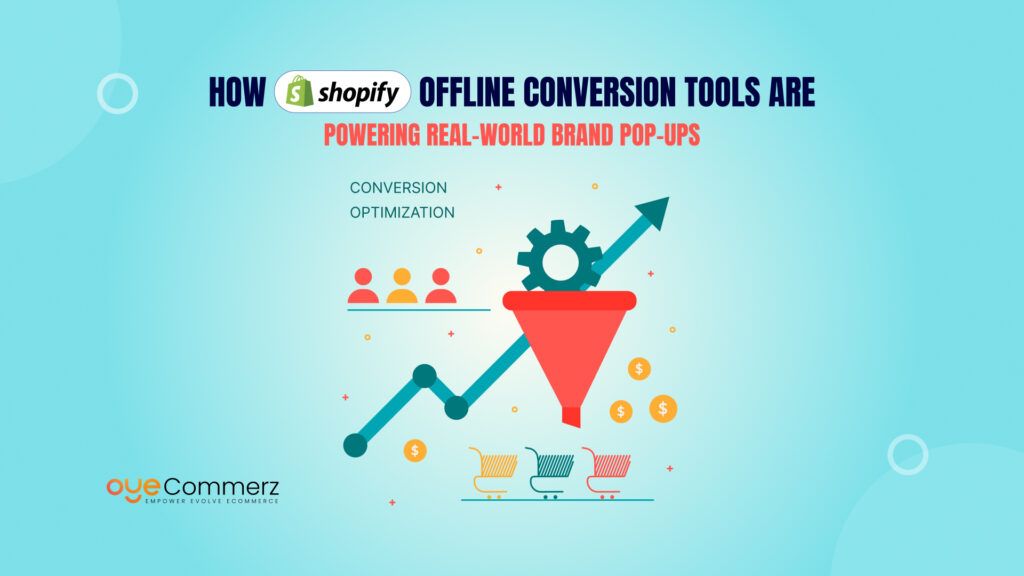Did you know that Amazon dominates nearly 40% of all U.S. e-commerce sales? With millions of daily shoppers, it’s a goldmine for sellers. But here’s the challenge—managing inventory, pricing, and orders across Shopify and Amazon can be a nightmare if done manually.
Problem: Many Shopify merchants struggle with stock mismatches, overselling, and time-consuming manual updates when selling on Amazon.
Agitate: Imagine a customer placing an order for an out-of-stock item—leading to cancellations, negative reviews, and lost trust. Worse, Amazon’s strict policies can penalize sellers for fulfillment delays, hurting your sales and rankings.
Solution: The right Shopify Amazon Integration Apps automate product syncing, inventory updates, and order fulfillment—so you can focus on growth, not logistics.
In this guide, we’ll explore the best Shopify Amazon integration apps in 2025, their features, and how to choose the perfect one for your business. Let’s dive in!
Table of Contents
ToggleWhy Shopify Amazon Integration Apps Matter in 2025
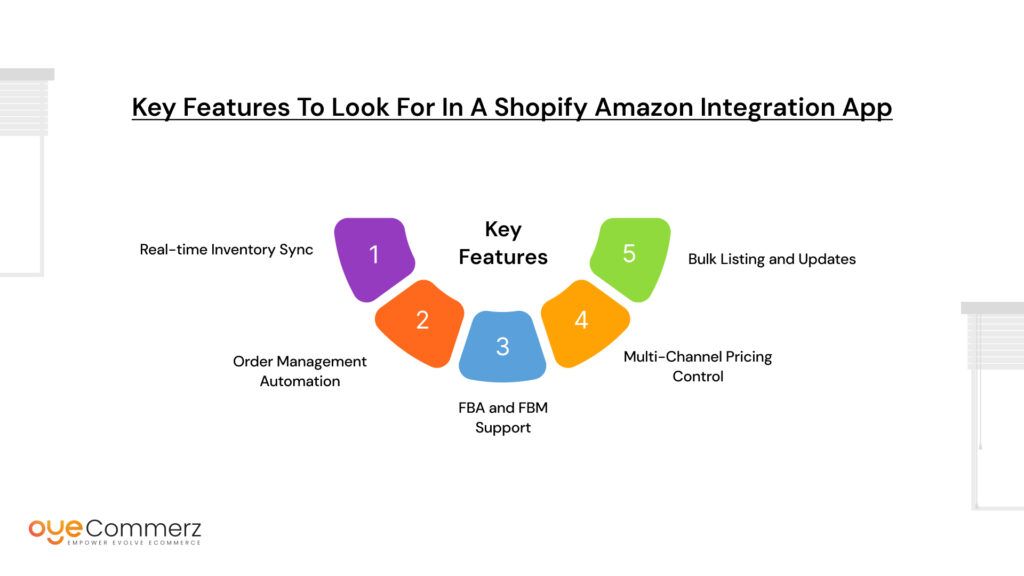
E-commerce is evolving rapidly, and businesses that fail to adapt risk falling behind. With Amazon capturing nearly 40% of all U.S. e-commerce sales, sellers cannot afford to ignore the potential of a multichannel strategy. However, managing Shopify and Amazon separately leads to inefficiencies, errors, and missed opportunities.
Why Integration is Essential
- Seamless Inventory Management – Without real-time syncing, overselling or stockouts can damage your reputation.
- Automated Order Fulfillment – Manually processing Amazon and Shopify orders separately is time-consuming and error-prone.
- Accurate Pricing and Listings – Keeping product details, pricing, and promotions consistent across both platforms is crucial for maintaining sales momentum.
- Time and Cost Savings – Automating workflows reduces manual effort, helping businesses scale faster without increasing operational costs.
Key Features to Look for in a Shopify Amazon Integration App
- Real-time Inventory Sync – Prevents stock discrepancies by automatically updating availability across both platforms.
- Order Management Automation – Consolidates orders from Amazon into your Shopify dashboard for easier processing.
- FBA and FBM Support – Allows sellers to choose fulfillment by Amazon (FBA) or handle shipping independently (FBM).
- Multi-Channel Pricing Control – Adjusts pricing dynamically to stay competitive on both Shopify and Amazon.
- Bulk Listing and Updates – Saves time by enabling bulk uploads and edits for products.
Choosing the right Shopify Amazon Integration App ensures that your business operates efficiently, improves customer experience, and maximizes sales potential. In the next section, we’ll explore the best apps available in 2025.
Best Shopify Amazon Integration Apps in 2025
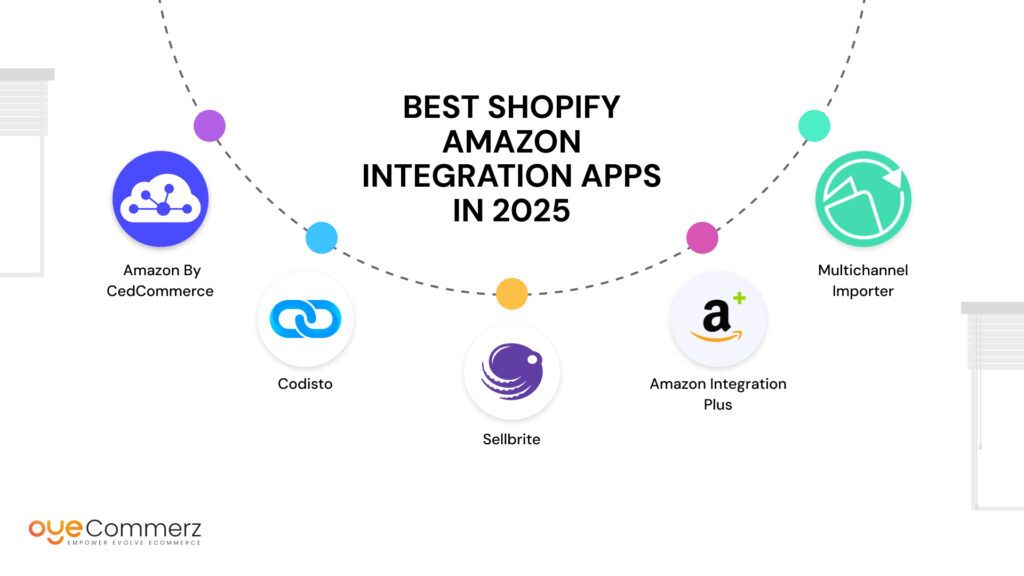
Choosing the right Shopify Amazon Integration App is critical for smooth operations, automated inventory management, and streamlined order fulfillment. With many options available, it’s essential to select an app that fits your business needs. Below are some of the top integration apps for 2025.
1. Amazon by CedCommerce
- Offers real-time inventory and pricing synchronization.
- Supports bulk product uploads and automated order management.
- Provides FBA and FBM support for flexible fulfillment options.
2. Codisto
- Native Shopify interface for seamless Amazon listing and management.
- Automatic syncing of stock, pricing, and orders across multiple marketplaces.
- Supports multi-currency and multi-region selling.
3. Sellbrite
- Cloud-based platform with a user-friendly dashboard.
- Centralized inventory control across Shopify, Amazon, eBay, and other marketplaces.
- Automates order routing and fulfillment.
4. Amazon Integration Plus
- Designed for high-volume sellers with advanced automation features.
- Real-time syncing of listings, stock levels, and prices.
- Robust reporting tools for better sales analysis.
5. Multichannel Importer
- Simplifies importing products from Amazon to Shopify.
- Enables bulk product listing with automatic data mapping.
- Supports Amazon FBA integration for streamlined fulfillment.
Comparison Table: Key Features & Pricing
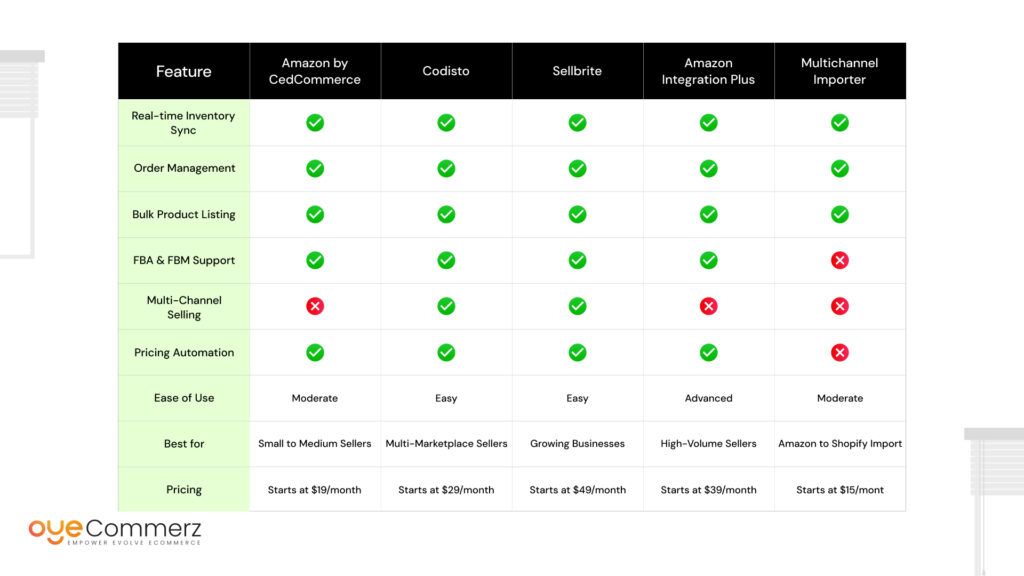
With multiple Shopify Amazon Integration Apps available, selecting the right one can be challenging. Below is a comparison of the top apps, highlighting their key features and pricing to help you choose the best fit for your business.
How to Use This Table
- If you sell on multiple marketplaces beyond Amazon and Shopify, Codisto or Sellbrite are strong choices.
- If you need deep automation and analytics, Amazon Integration Plus is ideal for high-volume sellers.
- If you want a budget-friendly app for simple Amazon-Shopify syncing, Multichannel Importer is a good option.
- For a balanced solution with FBA support and automation, Amazon by CedCommerce is a solid pick.
Selecting the right Shopify Amazon Integration App depends on your specific business needs. Up next, we’ll break down the essential technical terms you should know before integrating your store.
Technical Terms Explained (For Beginners)
If you’re new to using Shopify Amazon Integration Apps, understanding key technical terms will help you navigate the setup process with confidence. Here are some essential terms you need to know:
1. Fulfilled by Amazon (FBA) vs. Fulfilled by Merchant (FBM)
- FBA: Amazon handles storage, packing, and shipping on your behalf. This can improve delivery speed and customer satisfaction but comes with additional fees.
- FBM: You handle inventory storage, packaging, and shipping. This gives you more control but requires efficient logistics management.
2. ASIN (Amazon Standard Identification Number)
A unique 10-character identifier assigned to every product on Amazon. If you’re listing an existing product, you must use its ASIN. If you’re selling a new product, Amazon will generate an ASIN for you.
3. Amazon Buy Box
The Buy Box is the section on an Amazon product page where customers can directly add an item to their cart. Winning the Buy Box can significantly increase sales, and factors like pricing, seller performance, and fulfillment method influence eligibility.
4. API Integration
An API (Application Programming Interface) allows Shopify and Amazon to communicate in real time. A Shopify Amazon Integration App uses APIs to sync inventory, orders, and pricing automatically, eliminating manual work.
5. Real-Time Inventory Sync
A feature that updates stock levels instantly when a sale is made on either Shopify or Amazon. This prevents overselling and stockouts.
6. Multi-Channel Fulfillment (MCF)
Amazon’s fulfillment service that allows you to use FBA to fulfill Shopify orders. This helps maintain fast shipping times across multiple platforms.
7. Listing Optimization
The process of improving product titles, descriptions, images, and keywords to increase visibility and conversions on Amazon. Many integration apps offer bulk listing tools to streamline this process.
Understanding these terms will help you choose the right Shopify Amazon Integration App and optimize your selling strategy.
Who Should Use Shopify Amazon Integration Apps?
Not all businesses operate the same way, and choosing the right Shopify Amazon Integration App depends on your specific needs. Whether you’re just starting in e-commerce or managing a high-volume store, these apps can help streamline operations and maximize sales.
1. New E-Commerce Sellers
- If you’re launching your first online store, integrating Amazon with Shopify allows you to tap into Amazon’s massive customer base while maintaining your independent brand.
- Avoids manual product uploads and order management, making it easier to focus on marketing and growth.
2. Existing Amazon Sellers Expanding to Shopify
- If you already sell on Amazon and want to build your own brand presence, a Shopify store provides a dedicated space for loyal customers.
- Integration apps help sync inventory and pricing across both platforms, preventing stock discrepancies.
3. Shopify Store Owners Looking to Increase Sales
- If you run a successful Shopify store but struggle with traffic and conversions, selling on Amazon opens the door to a larger audience.
- A Shopify Amazon Integration App ensures seamless order management and multi-channel fulfillment.
4. High-Volume Sellers Managing Large Inventories
- Businesses with hundreds or thousands of SKUs benefit from automation tools that update stock levels and pricing in real time.
- Helps prevent overselling, stockouts, and pricing mismatches across multiple sales channels.
5. Brands Using Amazon FBA or Multi-Channel Fulfillment
- If you use Fulfilled by Amazon (FBA), integration apps help streamline order routing from Shopify to Amazon’s warehouses.
- With Multi-Channel Fulfillment (MCF), you can use Amazon’s logistics network to fulfill Shopify orders while maintaining a centralized inventory.
Regardless of your business size, the right Shopify Amazon Integration App can help you scale efficiently, reduce operational headaches, and increase profitability.
Contact to Migrate your Site to Shopify Now
Struggling with Migration? Oyecommerz Can Help!
Switching to Shopify or integrating with Amazon can be overwhelming, especially if you’re managing a large product catalog, existing orders, and customer data. That’s where Oyecommerz comes in.
Why Choose Oyecommerz for Shopify Migration?
- Seamless Data Transfer – Move your products, customer records, and order history without errors.
- Amazon Integration Setup – We help configure Shopify Amazon Integration Apps to ensure real-time inventory sync, automated order processing, and hassle-free fulfillment.
- Minimal Downtime – Keep your store operational while migrating, avoiding disruptions to sales.
- Expert Support – Our team handles the technical complexities so you can focus on growing your business.
Who Can Benefit from Oyecommerz?
- Sellers migrating from WooCommerce, Magento, or other platforms
- Amazon sellers looking to build a Shopify store
- Shopify merchants expanding to Amazon
By partnering with Oyecommerz, you ensure a smooth migration process and a fully optimized Shopify Amazon Integration App setup. Ready to take your e-commerce business to the next level? Let’s get started today.
How to Choose the Best Shopify Amazon Integration App
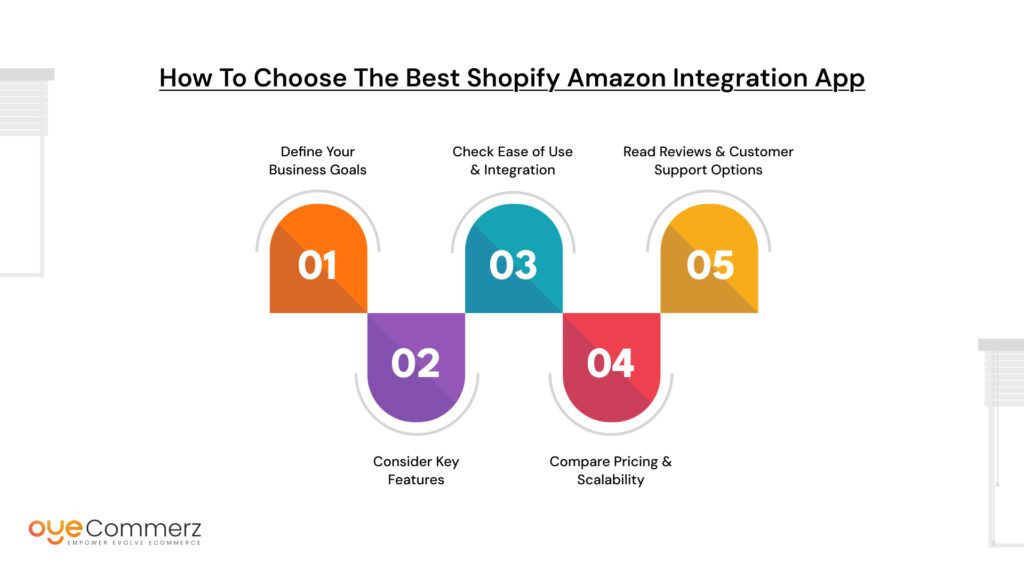
With so many Shopify Amazon Integration Apps available, selecting the right one depends on your business needs, budget, and technical expertise. Here’s how to make the best choice:
1. Define Your Business Goals
- Are you an Amazon seller expanding to Shopify or a Shopify merchant looking to sell on Amazon?
- Do you need inventory synchronization, order automation, or pricing adjustments?
- Will you be using Fulfilled by Amazon (FBA), Fulfilled by Merchant (FBM), or Multi-Channel Fulfillment (MCF)?
2. Consider Key Features
Look for apps that offer:
- Real-time Inventory Sync – Prevent overselling and stock discrepancies.
- Automated Order Management – Consolidate orders in one dashboard for easier processing.
- Bulk Product Listing & Editing – Save time by managing multiple SKUs at once.
- FBA & FBM Support – Choose how you fulfill orders efficiently.
- Multi-Channel Pricing Control – Adjust pricing dynamically across Shopify and Amazon.
3. Check Ease of Use & Integration
- Does the app provide a user-friendly dashboard?
- Can it be easily integrated with existing Shopify workflows?
- Does it offer customization options based on your business size and complexity?
4. Compare Pricing & Scalability
- Some apps charge a flat monthly fee, while others take a percentage of sales.
- If you’re a small business, start with an affordable app with essential features.
- If you’re a high-volume seller, invest in a premium app with advanced automation.
5. Read Reviews & Customer Support Options
- Check real merchant reviews to understand reliability and ease of use.
- Ensure the app provides responsive customer support via chat, email, or phone.
Choosing the right Shopify Amazon Integration App ensures seamless operations, better efficiency, and higher sales.
Conclusion
Expanding your business across Shopify and Amazon is no longer an option—it’s a necessity in today’s competitive e-commerce landscape. Managing both platforms manually can lead to inventory errors, pricing mismatches, and lost sales opportunities. That’s why choosing the right Shopify Amazon Integration App is critical for success.
A well-integrated solution helps you:
- Automate inventory updates and order processing
- Eliminate overselling and stock discrepancies
- Streamline fulfillment with FBA, FBM, or Multi-Channel Fulfillment
- Scale efficiently without increasing manual workload
Whether you’re a new seller, an established brand, or a high-volume retailer, there’s an integration app tailored to your needs. By investing in the right tools, you can focus on growing your business instead of managing logistics.
If you’re migrating to Shopify or need expert guidance in setting up a Shopify Amazon Integration App, Oyecommerz is here to help. Take the next step toward seamless e-commerce success today.

